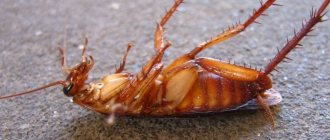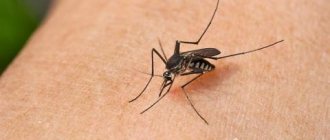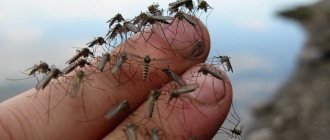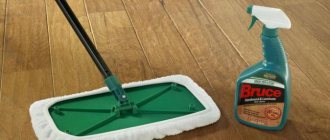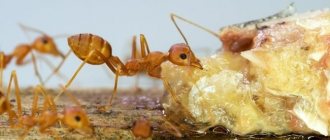Despite the generally accepted opinion that pests can only appear in private residential buildings and country houses, mice can increasingly be found in the homes of city residents. Nowadays, no one is surprised by the appearance of mice in an apartment on the first floor.
Lack of regular treatment of basements leads to the proliferation of animals. Rodents often move to higher floors, which also do not guarantee protection against them. The animals get into small cracks under the baseboards, climb the walls of houses and electrical wires, get into the garbage chute, into holes near sewer pipes, and live in ventilation holes.
If you find gnawed bags of cereal, flour or granulated sugar at home, you know that you have uninvited neighbors. In addition, they have settled in perfectly and are enjoying life in your city apartment. The kitchen is their favorite place, as there is always something to eat here.
The damage caused by rodents is not limited to spoiled food alone. Chewed baseboards, electrical wiring, insulation, things - pests gnaw everything that comes in their way.
In addition, mice are very fertile and can reproduce all year round, producing up to 14 litters of 3-12 mice each. If you do not take the necessary measures to destroy them in time, mice will soon fill your home. And then it will become very difficult to fight them.
Capture methods
There are at least four options for catching pests using improvised means available in almost every home:
- glass jar;
- flower pot;
- plastic bottle;
- a bucket with a capacity of five or more liters.
There are other methods of catching mice at home that require more serious preparation and a trip to the nearest hardware store:
- live traps are a kind of mouse trap, with the only difference being that the mouse will not be harmed; you can make it yourself or purchase a ready-made device;
- special glue for rodents;
- ready-made glue traps;
- rat poison - the disadvantage of this method is the inability to detect a corpse that emits an unpleasant odor;
- a cat or cat - the method is not always reliable: there are pets that themselves try to hide as soon as they see a small mouse.
By the way, the use of adhesive substrates is not suitable for humanists: trying to free itself from a trap, the animal makes heartbreaking sounds , which only a person with an impenetrable psyche can withstand.
How to understand that there is a mouse living in the house
You will hear it, see it and even feel it. They leave evidence:
- Check your kitchen cupboard for flour, cereals and dried fruits. If you store them not in jars, but in bags, the provisions could be damaged by the teeth of a rodent and scatter on the shelf;
- where the mouse ate, it left its excrement to you in gratitude for dinner - small black dry pellets, similar to grains;
- there are more cracks and holes in the house - behind the baseboards, in the walls, in various secluded places;
- an unpleasant mouse smell appears in the cabinet, under the sink and bathtub, if you have a large mouse family living with you for a long time;
- you don't sleep well at night, you hear rustling, squeaking and scratching.
Method 1: glass jar
How to catch a mouse with a jar? In addition to the container itself (by the way, you can use a glass of a suitable size), you need to stock up on:
- a coin with a diameter of 2 cm or more;
- tape;
- bait.
After which simple preparatory work is carried out:
- The bait is attached to the inner surface of the jar using tape so that it is closer to the bottom of the container.
- Place the jar upside down on a support (cardboard, plank, etc.).
- The container is placed so that one edge of the neck rests on the base, and the other rests against the edge of the coin.
The mechanism of action of such a trap is simple to the point of banality: the mouse, trying to get to the treat, will definitely hit the coin and end up in an ambush. All that remains is to turn the jar over with the substrate and throw the rodent out in a nearby field.
You should not release a captive in a residential area so that she does not return to the house again.
How to use a mousetrap correctly?
First, let's figure out what kind of mousetraps actually exist.
Mousetrap-frame
The simplest and, as we have already found out, one of the most effective is a springy or frame mousetrap.
As a rule, it is made from a small piece of wood, although plastic models are also often found. Inside the structure there is a small spring, a bracket and a place where you can place the bait (hook).
The principle of operation is very simple: the mouse will smell the smell of the treat and run to the mousetrap. As soon as she touches the prepared bait, the same spring will work and the bracket will be thrown out, killing the rodent.
After emptying the mousetrap, it can be reused.
Most often, when trying to catch a boring rodent in such a trap, people make the same mistake: they put too much stock for the hook, more than necessary. That is, the bait should be installed inside the mousetrap in such a way that the spring is triggered almost immediately after the pest just touches the food, and not when the mouse has already completely eaten everything.
This seemingly completely insignificant nuance can affect the success of the entire “event”.
So, remember how to work with a frame mousetrap:
- first you place a piece of bait on the trigger;
- next you need to very carefully cock the clamp;
- now place the holder on the clamp;
- then insert the retainer into the trigger and that's it.
Remember, the retainer must be installed exactly so that it slides off the trigger even with the slightest touch. It is advisable to carefully check the operation of the mousetrap before installing it.
Mousetrap
Among the advantages of mousetraps, we highlight their efficiency and light weight.
The simple design consists of two jaws made of plastic. One of these jaws works thanks to a compressed spring, the mechanism of which triggers the movement of the jaws themselves after any movement occurs inside the mousetrap.
The prepared bait for the rodent is placed “in the mouth” of the mousetrap, so that when the animal touches the structure, the jaws snap shut and kill its little victim.
When working with any of the above types of mousetraps, it is important to remember one more important rule: a dead mouse cannot be pulled out of a mousetrap with bare hands. Be sure to wear thick gloves before doing this or pick it up with paper
3. There are also harmless mousetraps, that is, those when the mouse is actually caught, but at the same time it remains alive.
Of course, such mousetraps are the optimal solution to the problem if you do not want to put up with the presence of rodents, but you also feel sorry for killing them or you are unable to look at a dead animal.
However, when using just such mousetraps, it is important not to forget to check them in a timely manner, otherwise the caught animal will still die from stress or dehydration. After you have caught the mouse, it should be released into the wild, but this should be done away from residential buildings
Otherwise, after some time, she will return to you again, and perhaps to your neighbors
After you have caught the mouse, it should be released into the wild, but this should be done away from residential buildings. Otherwise, after some time, she will return to you again, and perhaps to your neighbors.
What harmless mousetraps exist? For example, sticky. To prepare them, you can use special glue or natural glue.
The product is applied in a small layer to a wooden or plastic tray, then a little bait is placed in the center of this tray and wait. Then all the work of catching the mouse will be done by the “hero of the occasion” herself. A mouse that smells a tasty bait will run to the tray, climb onto it and get stuck, most likely never getting to the food.
Over time, the rodent will die from suffocation or dehydration, and since such death does not occur quickly, does not occur immediately and is painful, it is recommended to check the mousetrap from time to time.
Method number 2: flower pot
Required:
- a clay or plastic pot with a hole in the bottom; if the second option is used, then it is weighted with a weight;
- thread;
- match or toothpick;
- clip;
- bait;
- piece of plywood.
Making a trap:
- The pot is turned upside down on a sheet of plywood.
- The thread is pulled through the hole. A match is tied to the outside of the pot, and the bait is attached to the inside with a paper clip. The bait should hang almost at the very bottom.
- The upper edge of the pot is supported by a match with a thread tied to it.
- The structure is installed in a rodent habitat.
When the rodent reaches for the bait, the match will act as a trigger and the pot will cover the pest.
Bait Products
Many cartoons and even films have created a stereotype that the favorite treat of rodents is cheese. But this is not true at all. The mouse, of course, will eat this food, but if it has a choice, it will choose the following foods:
- Fragrant sunflower oil. Unrefined is also suitable.
- Bread.
- Cookie.
- Any types of nuts.
- Smoked fish.
- Raw and salted lard.
- Sausage. They especially prefer smoked.
These products are great for use in any trap. They will be used as bait. A hungry animal will not be able to resist and run past, but in any case it will taste the treat. This is what will help you catch her very quickly, luring her out of her hiding place.
Method number 3: plastic bottle
How to catch a mouse in the house using a plastic bottle? In addition to the container itself, you will need thread and bait.
Sequencing:
- Bait is thrown to the bottom.
- The bottle is placed on the edge of the table so that the bottom hangs down.
- One edge of the thread or fishing line is securely fastened to the table, the second is tied to the neck.
The bottle, under the gravity of a rodent who decides to feast on it, will turn over and the mouse will have nothing left to do but dangle in the air, awaiting its fate.
How to catch a mouse in an apartment or house without a mousetrap using a plastic bottle, an eraser, a paper clip and two plastic or wooden tubes:
- A small hole is cut in the center of the bottom.
- The top is cut at a certain distance (¼) from the neck so that an improvised lid is obtained.
- One tube is threaded through the center of the bottle, the second through the center of the “cap”.
- The bait is threaded onto a paper clip with an elastic band and threaded through the drilled hole, the second end of the elastic band is secured on the outside of the cork.
- The second rubber band is attached to the outside of the bottle on the tubes so that the “lid” is open.
Operating principle: from the tension created by the mouse pulling the bait, the first elastic band will break and the lid will slam shut.
We use cigarette tobacco
You may not know, but tobacco, which is used to make cigarettes, can help you eliminate mice from your home. To maximize the effect of use, you need to choose the most vigorous tobacco, such as Belomor and Prima. It would not be a bad idea to scatter shag; it also helps in the fight against cunning rats.
Typically, tobacco is used in large industrial premises, namely, in outbuildings, basements and attics, since the odor emitted is not pleasant to humans and pets. But if you still want to treat your house with this product, then make a tincture and spray what rodents damage: cabinets, corners of rooms, various crevices.
Method number 4: using a bucket
This is also a fairly simple method that helps solve the problem of how to catch a mouse in an apartment.
- The bucket is filled with a small amount of water, a newspaper is fixed on top, and a cross-shaped cut is made in the center. The bait is also placed here.
- An improvised ladder (board, ruler, twig, etc.) is placed against the bucket.
Having reached the bait, the mouse will fall through and drown.
If you don’t want to kill the pest, then you don’t have to pour water.
In this case, use a container with high and slippery sides so that the mouse cannot jump out or run away.
Professional treatment of an apartment or private house
If the rodent colony has already reached a large size, you should immediately contact a professional. They will select the most effective product and carry out a complete treatment of the apartment or private house.
Special services operate according to the following scheme:
- First of all, they completely inspect the home and identify all possible locations of parasites.
- Depending on the number and location of rodents, professionals will select the most effective means or mix several drugs at once.
- If necessary, the treatment will be adjusted to save the owners from a second invasion.
Depending on the area, professionals will need from half an hour to 2 hours to process. During this time, children and pets must leave the premises. The estimated cost of deratization of a one-room apartment is from 1,500 rubles.
Professionals will be able to treat the most difficult to reach places
Method number 5: glue and glue traps
When working with glue, you need to wear gloves and protective clothing, as the product is quite difficult to wipe off from skin and fabric. Glue is applied to cardboard or plywood in a thin layer or strips at a distance of 1-1.5 cm from each other, and bait is placed in the center. If a ready-made glue trap is used for catching, then no preparatory steps are required.
An improvised trap is installed in places where mice most often go hunting. When the rodent sticks, it will die from thirst and hunger, and the tablet with the corpse can be thrown into the nearest trash can. By the way, it is best to destroy carcasses by burning, so as not to inadvertently spread a dangerous infection carried by rodents.
How to understand that there is a mouse living in the house
- If there is a mouse in your house, you may hear it. From time to time she squeaks, scratches, gnaws and scratches. This is especially audible at night, when extraneous sounds in the house fade away.
- The most important indicator of an unwanted tenant in your home is chewed bags of cereals, damaged fabric bags in which dried fruits, nuts or other food supplies are stored. You may also see food debris or seed skins in the corners of the farthest drawers.
- In places where mice live most often, you can find rodent excrement. They are very easy to confuse with garbage - they are black and dry.
- Very often, in a house where a mouse lives, the baseboards are gnawed, holes are noticeable in the shaft, and there are significant gaps along the water pipes.
- If a mouse has been living in the house for several days, there will be a distinct mouse smell in the room.
Cleanliness is the enemy of the rodent
By keeping the house clean and following the recommendations, you can create conditions that become unbearable for mice to live in and they quickly retreat back home.
- Periodic general cleaning will help to avoid the accumulation of garbage, leftover food in corners, table drawers and other inaccessible places, and therefore rodents will not have the opportunity to profit from anything.
- Products are stored in tightly sealed jars or metal containers with a heavy lid.
- Household and kitchen waste is collected in buckets with lids and removed from the apartment in a timely manner.
- Install grilles on ventilation ducts, seal holes in the floor and baseboards.
Eliminating the causes of mice
The most common reasons why rodents may appear in your apartment are related to unsanitary conditions. Leaving food on the table, crumbs on the floor, irregular garbage disposal, open food in accessible places - all this attracts mice.
That's why:
- clean up the apartment by hiding food in special closed containers;
- remove water accessible to rodents. They can't stay without liquid for long, so there's a chance they won't last long with you;
- install the grille on the exhaust vent;
- Check the baseboard for holes and cracks. A hole with a diameter of 1 cm is enough for animals to crawl into your apartment;
- Take out the trash regularly.
Only after living conditions for rodents become unfavorable can you begin to catch them.
Where is it relevant to use the most popular plants?
Often this method is suitable for private homes. After all, many of these plants are shrubs. As a preventive measure, you can protect the space around you from rats by planting several bushes in front of your house or along it. Scatter the branches around. Henbane, blackroot, datura, black elderberry and castor bean are some of the most popular organic rodenticides.
As for flower beds in the country, chamomile, calendula, hydrangea and daffodil planted together will help you. In addition to their main purpose, flowers can repel ticks, bedbugs, mosquitoes, ants, fleas and insects. During flowering, they will delight you and your family and save money on rodent control products. Just plant bushes throughout the garden around your home and live in peace.


